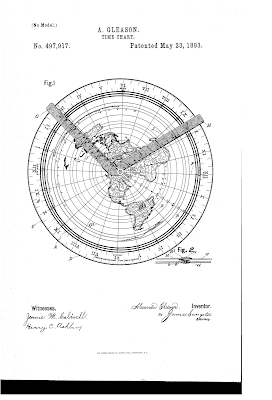Okay, sticking with the satellite aspect of the argument, the satellites I point at for my Dish Network are located in my SW sky. If the satellite is nothing more than a relay device hanging from a balloon, then the elevation and azimuth that subscribers across the United States use to aim at that satellite would be very different for a flat earth than what it is for a spherical earth. (Of course, given the convergence point away from the surface is so far up, a balloon would not be able to reach that altitude, let alone stay motionless.)
So using the elevation & azimuth for South Bend, IN (the city nearest to where I am) you get an elevation of 35.7? and an azimuth of 145.2? from true north for Echostar 15 at 61.5?W. Let's now look at Charlotte, SC, zip code 28101, which is approximately under my line-of-sight to 61.5?W. The elevation and azimuth to the same satellite is 44.1? and 148.4? from true north. So now we have a triangle, one angle 35.7?, one angle 135.9? (180-44.1), which gives an angle of 8.4? at the satellite. Solving for the satellite altitude gives us approximately 2,470 km based on the shortest distance between Charlotte and South Bend of 860 km. That's almost 47 times the record unmanned balloon record of 53 km. So, no, satellites are not hung from a balloon floating above a flat earth.



